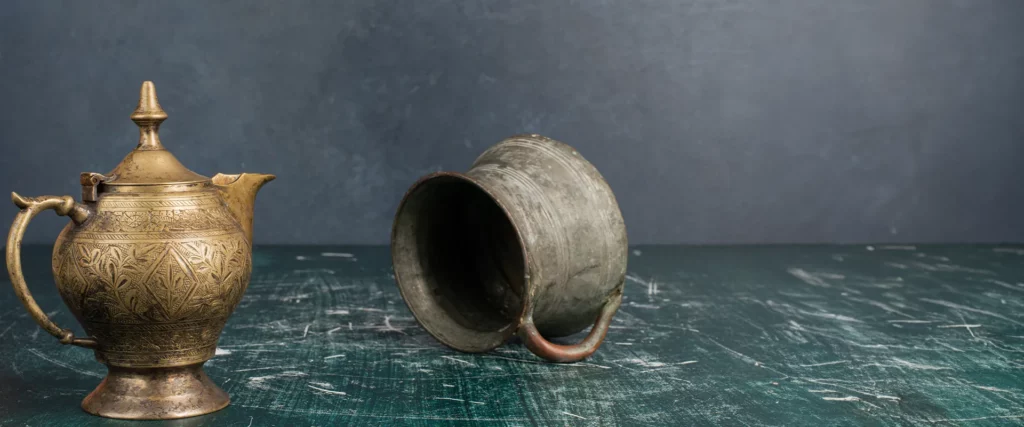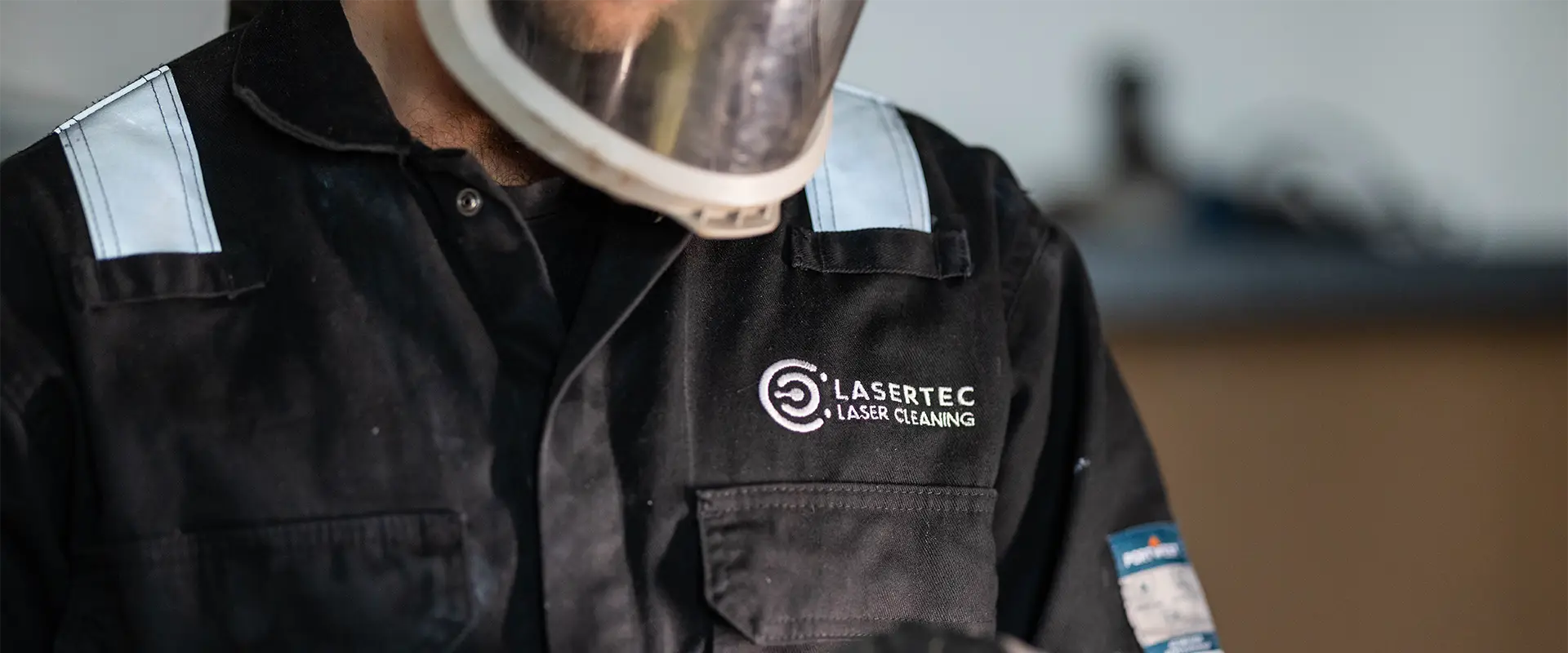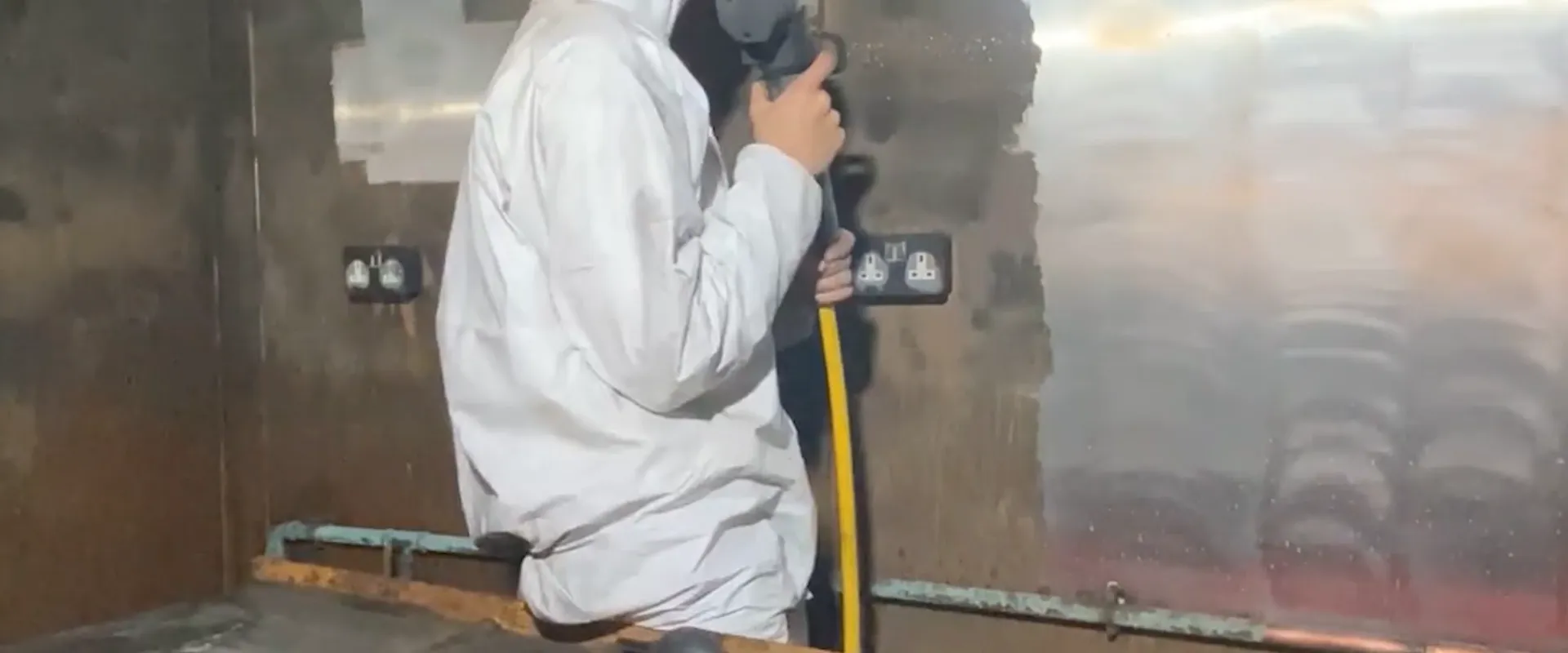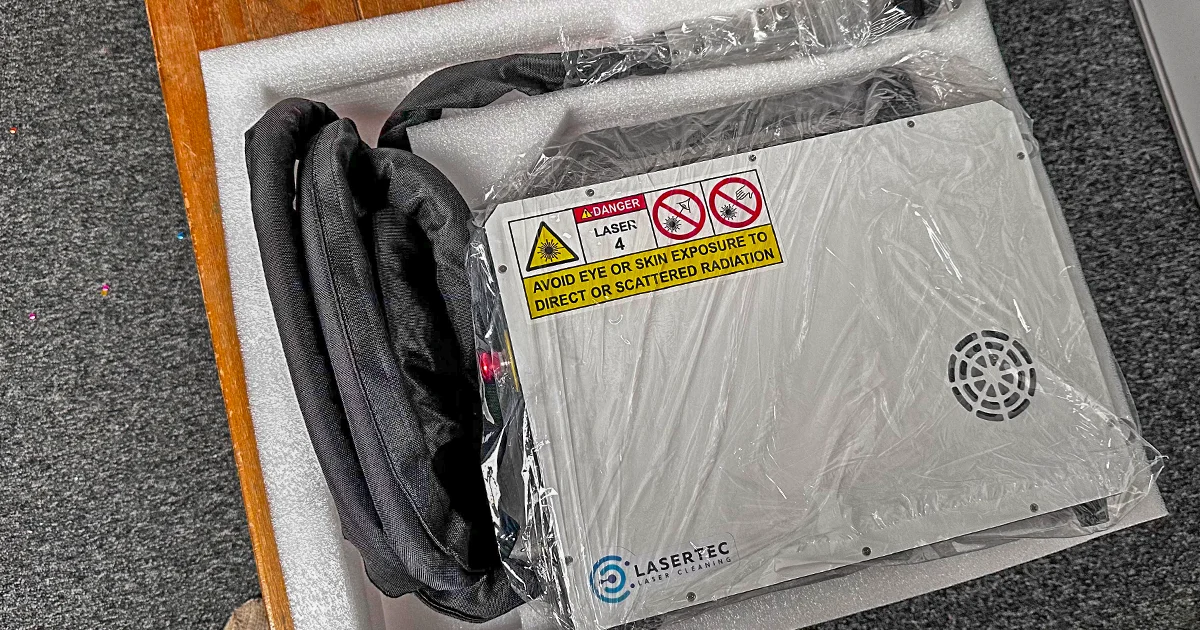Historical artefacts are tangible links to our past, offering invaluable insights into bygone eras. From the intricate details of a Roman bust to the weathered inscription on a medieval chalice, these objects tell us stories that bridge the gap between generations. However, the preservation of these irreplaceable treasures presents a constant challenge.
Traditional cleaning methods, such as chemical methods, while well-established, often come with inherent risks. The delicate nature of historical artefacts necessitates a meticulous approach. A brushstroke too firm can damage a painted surface, while harsh chemicals can weaken fragile materials. The very act of these cleaning approaches can inadvertently contribute to the degradation of the very object it aims to preserve.
Fortunately, the field of conservation is witnessing a groundbreaking development: laser cleaning technology. This innovative approach offers a safe and precise solution for restoring historical artefacts. Lasers can meticulously remove contaminants, revealing the object’s original form without compromising its delicate structure. Laser cleaning has the potential to revolutionise the way we preserve our cultural heritage, ensuring that these invaluable artifacts continue to speak to us for generations to come.”
Preserving Historical Artifacts
Conservators must navigate a critical balance between safeguarding the integrity of an artifact and revealing its inherent beauty and historical significance. This delicate dance is often complicated by the inherent risk of damage during the cleaning process. The materials used in historical artifacts are often fragile, and susceptible to even the slightest abrasion or chemical reaction side effects. A misplaced brushstroke on a painting can mar a delicate surface, while harsh solvents used in chemical baths can weaken textiles or dissolve pigments. Similarly, abrasive cleaning methods, while effective in removing some types of dirt, can leave behind permanent scratches or gouges.
Careful surface cleaning is paramount for the preservation of an artifact’s historical and artistic value. Layers of grime and dirt can obscure details, hindering our ability to appreciate the craftsmanship and artistry. Additionally, certain contaminants can accelerate the deterioration of an artifact’s underlying materials. For example, the presence of salts can cause the slow breakdown of stone or ceramics.
Therefore, the ideal cleaning method must be meticulously chosen, taking into account the specific material composition, age, and condition of the artifact. In the following sections, we will explore the innovative approaches and technologies that are revolutionising the field of conservation, allowing us to better preserve our irreplaceable cultural heritage.
Laser Cleaning for Restoration
The field of conservation is witnessing a groundbreaking innovation: laser cleaning technology. This revolutionary approach offers a safe and precise solution for restoring historical artifacts. Unlike traditional methods that rely on harsh chemicals or abrasive materials, laser cleaning utilises the power of focused light beams to meticulously remove contaminants.
The Science Behind Laser Beam Cleaning
Laser cleaning operates on the principle of photoablation. A precisely controlled laser beam is directed at the surface of the artifact. When the light interacts with the contaminant layer, it is absorbed and converted into heat. This heat causes the contaminant to vaporise, gently lifting it away from the underlying substrate. The key lies in the precise control of the laser’s wavelength and pulse duration, allowing for targeted cleaning without affecting the original material.
Advantages of Laser Cleaning for Restoration
Laser cleaning offers several distinct advantages for the restoration of historical artifacts:
Precision Cleaning: Unlike traditional methods that can inadvertently damage adjacent areas, laser cleaning allows for highly targeted removal of dirt and grime. The precise control of the short pulse lasers minimises the risk of damaging the delicate surface of the artifact.
Safe and Controlled: The minimal heat generated by the laser process ensures minimal risk of thermal damage to fragile materials like wood, paper, or textiles. This controlled approach is a significant improvement over harsh chemical baths or abrasive cleaning techniques.
Versatility: Laser cleaning technology is remarkably adaptable. It can be effectively used on a wide range of materials commonly found in historical artifacts, including metals, wood, stone, and even painted surfaces. This versatility allows conservators to address a broader range of restoration challenges with a single technology.
By offering a safe, precise, and versatile cleaning solution, laser cleaning technology is poised to revolutionise the field of artifact restoration. This innovative approach allows conservators to meticulously remove dirt and grime, revealing the true beauty and historical significance of these irreplaceable treasures.
Laser Technology in Action: Real Life Case Studies
The British Museum has been a pioneer in exploring the use of lasers for cleaning historical artifacts since 2005. This technology’s precision and non-contact nature make it ideal for safely restoring delicate objects. While traditionally used for cleaning stone, the museum is now investigating the potential of laser cleaning for a wider range of materials, including feathers, wall paintings and archaeological metals. This research holds promise for expanding the applications of laser cleaning in complex conservation projects. The team of scientists and conservators at the museum have investigated the use of the Museum’s Nd:YAG laser and Er:YAG laser cleaning on a wide selection of artefacts.
“Conservator using the Er:YAG laser to remove old epoxy from pearl shell on a Tahitian Mourner’s costume.”
You may like to read more information about how the British Museum has used lasers in the conservation of artworks here.
Laser Cleaning and the Preservation of Cultural Heritage
The field of historical artifact restoration is undergoing a transformative shift with the growing adoption of laser cleaning technology. This innovative approach offers a powerful tool for conservators, allowing them to meticulously clean and preserve our irreplaceable cultural heritage for generations to come.
Traditional cleaning methods, while established, often come with inherent risks. Laser ablation, however, provides a solution that is both safe and precise. The laser systems work by the power of focused laser pulses which can remove dirt, grime, and contaminants with exceptional accuracy. This targeted approach minimises the risk of damaging the delicate surfaces of artifacts, a significant advantage over traditional methods that can inadvertently cause abrasions or chemical reactions.
The benefits of laser cleaning extend far beyond mere cleaning. This technology allows conservators to reveal previously obscured details and hidden layers, offering a deeper understanding of the object’s history and artistic value. Furthermore, laser cleaning can help to arrest the deterioration of materials by removing harmful contaminants that can accelerate decay.
The growing adoption of laser cleaning in the field is bolstered by positive industry trends and endorsements. Leading institutions like the British Museum are actively researching the technology’s potential for a wider range of materials beyond stone, traditionally the focus of laser cleaning applications. Additionally, advancements in laser technology are leading to more user-friendly and adaptable equipment, making it a more accessible solution for smaller museums and restoration facilities.
What Surfaces Can Laser Cleaning Be Used On?
Laser cleaning is a versatile technology that can provide fantastic cleaning results on a wide range of surfaces, making it a valuable tool in various industries, especially for restoration and preservation. Here’s a breakdown of suitable surfaces for laser cleaning systems:
- Metals: This is a common application for laser cleaning. Metals like steel such as alloys, aluminum, copper, and brass can be effectively cleaned from all tarnishing using lasers to remove rust, oxide layers, and coating materials for tasks like welding preparation or restoration of historical artifacts.
- Plastics: Various types of plastics, including acrylic, polycarbonate, and ABS, can also benefit from laser cleaning. This non-damaging process removes coatings, adhesives, and contaminants, making it useful for applications like cleaning plastic molds, surface preparation for bonding or painting, and even cleaning medical devices.
- Stone and Natural Materials: Laser cleaning is powerful enough to remove layers of rust from large surfaces like building facades, but it can also be fine-tuned for delicate cleaning. This makes it suitable for cleaning corrosion and natural soiling from natural stone like marble, granite, limestone, and concrete, as well as for restoring historical artefacts like statues and monuments.
- Wood: Laser cleaning effects can be used on wood for tasks like removing paint or grime without damaging the underlying wood grain. This can be valuable for furniture restoration or cleaning delicate wood carvings.
- Ceramics: Laser cleaning is useful for cleaning print rollers, ceramic moulds, historical artefacts, and even baking moulds. The precise control allows for effective cleaning without harming the delicate ceramic material.
- Glass (with limitations): Some types of glass can be cleaned with lasers for applications like removing paint or ink. However, it’s crucial to choose the right laser settings to avoid damaging the glass.
What Types of Contaminants Does Laser Cleaning Remove?
Laser cleaning’s effectiveness stems from its ability to target and remove a wide range of contaminants from different surfaces. Here’s a breakdown of some common types of contaminants laser cleaning can tackle:
- Oxides and Rust: Laser cleaning excels at removing oxidation layers and rust from metals. This makes it ideal for restoring historical artefacts, cleaning industrial equipment, and preparing metal surfaces for further processing like welding or painting.
- Paints and Coatings: Lasers can effectively remove various paint and coating materials, including lacquers, varnishes, and even graffiti. This controlled removal is valuable for tasks like paint stripping during restoration projects or cleaning moulds and machinery in industrial settings.
- Oil, Grease, and Grime: Laser cleaning can remove oily residues, grease, and grime build-up from various surfaces. This makes it useful for cleaning machinery, tools, and even delicate historical artefacts where harsh chemicals cannot be used.
- Dust and Dirt: Laser cleaning can be used for detailed cleaning tasks, removing dust, dirt, and other particulates from surfaces. This can be valuable in applications like cleaning electronics, restoring artwork or preparing surfaces for further treatment.
- Biological Contaminants: Laser cleaning can be effective in removing certain types of biological contaminants like mould, mildew, and algae. This non-contact cleaning approach is beneficial for applications like cleaning building surfaces or restoring historical objects susceptible to mould growth.
- Adhesives and Bonding Agents: Lasers can precisely remove adhesives and bonding agents from various surfaces. This controlled removal process finds applications in electronics repair, restoration projects, and even cleaning medical equipment.
Laser Cleaning for European Artworks
The application of lasers in the conservation of artworks across Europe is a rapidly evolving field. Researchers are constantly exploring the potential of this technology for meticulous cleaning and restoration. One such example is a collaborative effort between Italian and French researchers (Salimbeni et al., 2016) investigating the use of Q-switched Nd:YAG lasers for cleaning encrustations on Romanesque polychrome sculptures in Lacona, Italy [DOI: 10.1016/j.culher.2016.02.011]. Their study employed a combination of laser cleaning tests, electron microscopy (SEM), and spectroscopy to analyse the effectiveness and safety of the laser treatment on the artwork’s pigments and patina.
This approach highlights the importance of meticulously chosen laser parameters like wavelength, fluence (energy delivered per unit area), and pulse duration for successful laser cleaning. In this instance, the researchers likely used a nanosecond laser pulse duration to target inorganic encrustations without damaging the underlying artwork.
While the focus of this example is on European artworks, the application of laser cleaning extends beyond geographical borders. Researchers worldwide, including those in the USA (Asmus et al., 2012) and Greece (Pouli et al., 2014) are actively exploring this technology’s potential.
It’s important to note that laser cleaning is not a one-size-fits-all solution. Careful consideration of the artwork’s material composition, age, and condition is crucial. While effective for removing inorganic encrustations and crusts, laser cleaning might not be suitable for yellowing or organic materials.
By combining advanced laser technology with scientific analysis techniques like microscopy and spectroscopy, conservators are unlocking new possibilities for restoring artworks across Europe and beyond. This paves the way for a future where our cultural heritage can be unveiled in its full glory, offering a deeper understanding of the artistic techniques and materials employed by past masters.
Key Takeaways: A Brighter Future for Historical Preservation
The growing adoption of laser cleaning technology signifies a transformative shift in historical artefact restoration. Unlike traditional methods that carry inherent risks, laser cleaning offers a safe and precise solution.
The benefits of laser cleaning extend beyond mere cleaning. This technology can reveal previously obscured details and hidden layers, offering a deeper understanding of the artefact’s history and artistic value. Additionally, by removing harmful contaminants, laser cleaning can help arrest the deterioration of materials, ensuring their longevity for future generations.
With comparative studies and advancements in technology making laser cleaning more user-friendly and accessible, this innovative approach is poised to revolutionise the field of conservation. Laser cleaning, along with other emerging technologies, offers a hopeful message for the future of historical preservation. We can now envision a future where our cultural heritage is not only preserved but also revealed in its full glory, allowing these irreplaceable artefacts to continue to speak to us across time.



